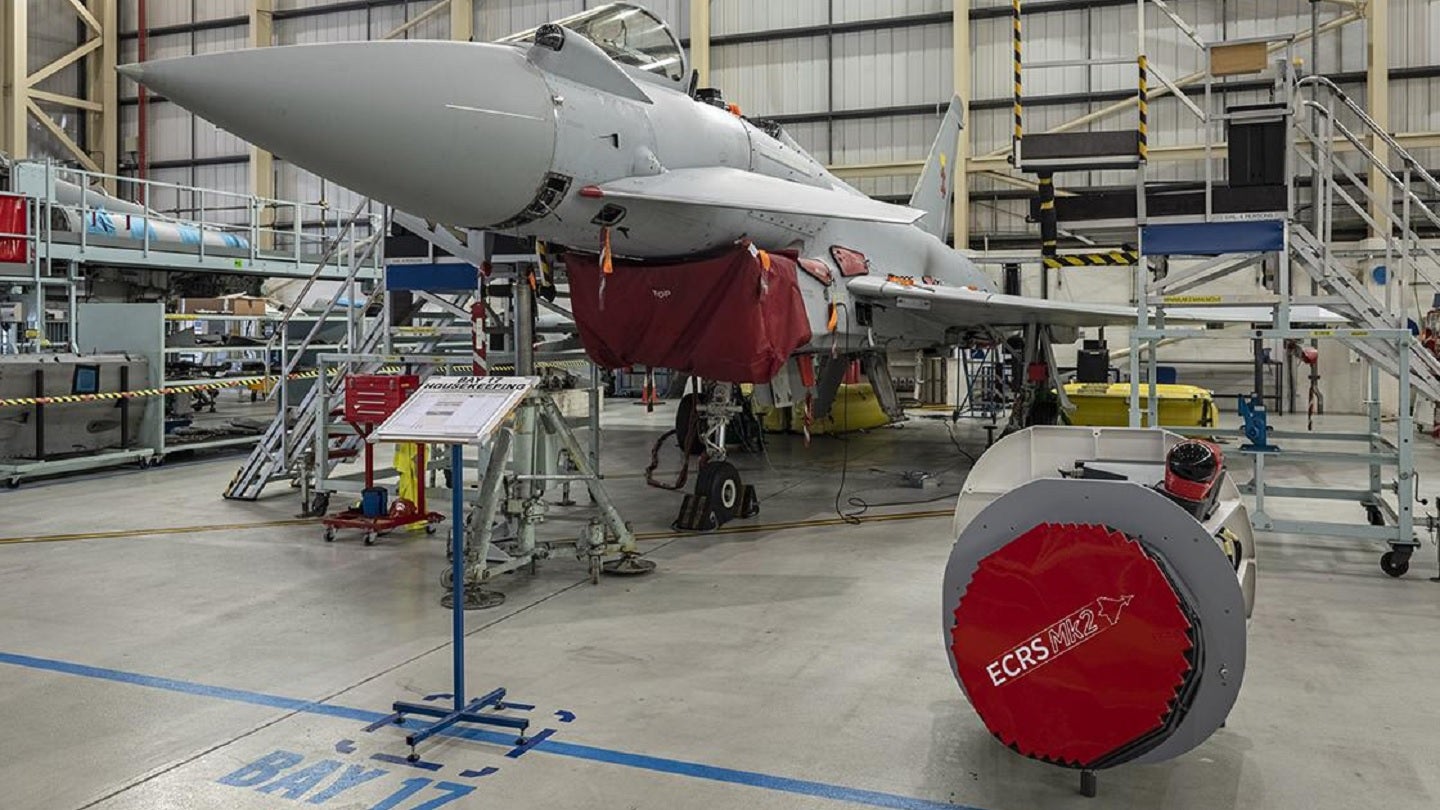
An £870m five-year contract has been awarded to BAE Systems and Leonardo UK to upgrade radar capabilities on the UK Royal Air Force’s (RAF) Typhoon multirole fighter, which will see the installation of the European Common Radar System (ECRS) Mk2 system.
A series of announcements in 2022 saw the commitment of £2.35bn investment into upgrades for the RAF’s Typhoon fleet. The newly announced deal is the first contract allocated from that earlier revealed investment and will see the completion of the development and integration of the ECRS Mk2.
The ECRS Mk2 is an active electronically scanned array (AESA) radar, capable of detecting and tracking multiple airborne and ground-based threats, as well as conduct electronic warfare (EW) operations, a significant capability now added to the RAF Tranche 3 Typhoons, according to a UK Government release published on 4 July.
The UK operates a mixed fleet of Tranche 1 (~30), Tranche 2 (67) and Tranche 3 (40) Typhoons, with the Tranche 1 aircraft due to be retired from service in 2025.
According to the UK Government release, the £870m contract will support 600 jobs across the country’s aerospace sector, including 300 at Leonardo’s site in Edinburgh, 100 electronic warfare specialists at the company’s site in Luton, and 120 engineers at BAE Systems’ site in Lancashire.
A prototype of the radar has been undergoing specialist testing at BAE Systems site in Warton, Lancashire, for several months. The system is due to undergo flight testing in 2024.
As well as delivering ECRS Mk2, the overall £2.35bn investment into the Typhoon is intended to provide the platform with the capabilities required for it to remain operational, and relevant, until 2040 and beyond.
Eye on the Typhoon replacement
The investment into Typhoon is also being carried out with an eye on the future Global Combat Air Programme (GCAP) project, in which the UK, Italy, and Japan are pooling resources to develop a next-generation multirole air platform that will replace the legacy aircraft in service.
Both Leonardo UK and BAE Systems are core members of the UK GCAP team, which has aspirations to introduce the new sixth-generation combat aircraft by 2035.
Official BAE Systems literature states that the both its and Leonardo UK’s involvement in both the Typhoon and GCAP programmes “will create opportunities to develop technology and skills from the ECRS Mk2 into the GCAP platform’s suite of advanced electronics, and vice versa, de-risking and accelerating both programmes”.
In July 2022 it was revealed the UK had already begun work on a technology demonstrator aircraft for its landmark Tempest Future Combat Air Systems (FCAS) programme, subsequently branded GCAP, with a first flight test due within the next five years. The GCAP aircraft will be known as Tempest in UK service.
Speaking at Farnborough Airshow, a senior UK Ministry of Defence official told Airforce Technology that a single supersonic demonstrator aircraft would be manufactured for the 2027 first flight but declined to comment on which systems would be initially tested on the platform.



